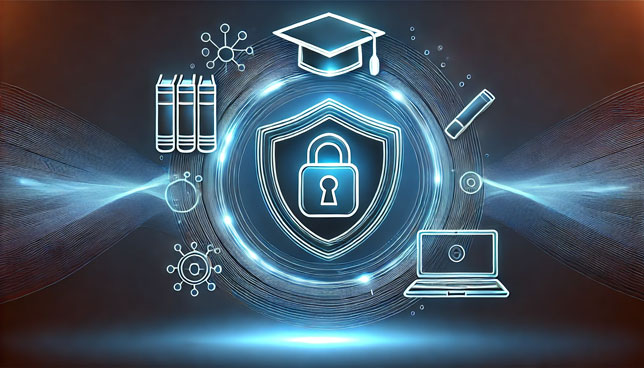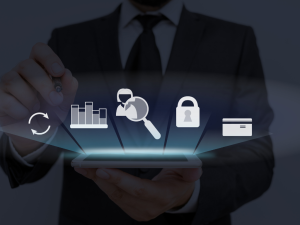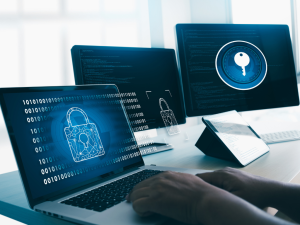In an era where cybersecurity talks often revolve around AI-powered threat detection, deepfake scams, or zero-trust architecture, there’s one uncomfortable truth that security pros keep coming back to:
People still forget to update their passwords.
It sounds almost laughable. But as organizations across the globe invest in cutting-edge defenses, many of the most damaging breaches in 2025 are still caused by something embarrassingly simple—bad cyber hygiene.
So, what exactly is going wrong, and what should IT learners and upskillers be doing about it?
The Basics That Still Break Everything
Let’s break down what we mean by “cyber hygiene.” These are simple, day-to-day practices that protect individuals and systems from basic security threats:
- Using strong, unique passwords (and not reusing them)
- Enabling multi-factor authentication (MFA)
- Regularly updating software and firmware
- Being cautious with email attachments and links
- Logging out of accounts when not in use
- Backing up data securely
Yet despite constant awareness campaigns, studies show that these steps are still neglected.
A 2025 report from Verizon’s Data Breach Investigations found that over 61% of breaches involved stolen or weak passwords. And MFA adoption in small organizations? Still under 40%.
Real-World Example: The $100M Mistake
Earlier this year, a mid-size tech company suffered a ransomware attack that halted operations for nearly two weeks. The cause? An employee used the same password for their project management tool and their personal email — which had already been compromised in a previous breach.
The attackers simply logged in.
No brute force. No phishing. No malware. Just a reused password and no MFA. The result: 14 days of downtime, massive reputational damage, and an estimated $100 million in recovery costs and lost revenue.
And here’s the kicker: the employee had completed an annual cybersecurity training.
Why Do Learners Still Ignore the Basics?
- They Think It’s Too Simple to Matter
With everyone talking about AI threats, it’s easy to think that password security is “entry-level.” But complexity doesn’t always equal impact. The truth is, basic hygiene prevents the most common attacks. - Security Fatigue Is Real
Gen Z and Millennial learners are constantly juggling logins, MFA pop-ups, and browser warnings. After a while, it becomes white noise—and that leads to carelessness. - They Don’t Think It’ll Happen to Them
Until a device gets wiped, an account gets hijacked, or a file is lost forever, many learners simply don’t treat digital safety as a personal priority.
The Basics That Still Work — When You Use Them
Here’s a refresher on the foundational habits that every IT learner should commit to mastering:
1. Password Managers Aren’t Optional
Using the same password across accounts is one of the biggest risks — yet it’s still common. A password manager (like Bitwarden or 1Password) can generate and store unique passwords for every service you use.
2. MFA: The 5-Second Safety Net
Multi-factor authentication adds a critical layer of protection. Whether it’s a text message code, an authenticator app, or a hardware key, MFA stops attackers who’ve stolen your password from walking in.
3. Updates Matter — Yes, Even That Browser Plugin
Outdated software is like leaving your front door open. Keeping everything up to date—especially your browser extensions, apps, and operating system—patches vulnerabilities before attackers can exploit them.
4. Spotting Phishing Isn’t About Being Smart
Even seasoned pros fall for well-crafted phishing. The key is slowing down. Double-check sender addresses. Hover over links. Don’t open random attachments. That moment of caution could save you hours of cleanup.
What Educators and Training Platforms Can Do
At Ascend Education, we’ve seen firsthand how learners thrive when security basics are made:
- Hands-on: Practical labs that simulate real-world login attacks or email spoofing.
- Relatable: Case studies of breaches caused by real mistakes.
- Integrated: Hygiene isn’t an intro module—it’s built into every course.
The most effective training treats cyber hygiene like a lifestyle, not a checkbox. Because let’s be honest: you can’t defend the cloud if you can’t protect your own email.
Learner Spotlight: Maya’s Reality Check
Maya, 26, was halfway through a cybersecurity bootcamp when she accidentally clicked a fake Zoom update link. Her laptop locked up, and she lost hours of unsaved lab work.
“It felt like I failed a basic test,” she said. But it was a turning point. Maya started taking small habits more seriously—using a password manager, checking URLs, enabling MFA everywhere.
She now mentors new students, reminding them that “cybersecurity starts with how you treat your own tech.”
Final Thoughts: The Basics Aren’t Optional — They’re Foundational
Cybersecurity in 2025 is undeniably advanced — but it’s also more human than ever. Behind every firewall, every alert, and every AI-powered defense is a person making a choice.
And sometimes, that choice is as simple as using a better password.
For tech learners looking to stand out, land jobs, and keep systems safe, the fundamentals are the foundation.
Because before you defend the network, you have to secure yourself.






